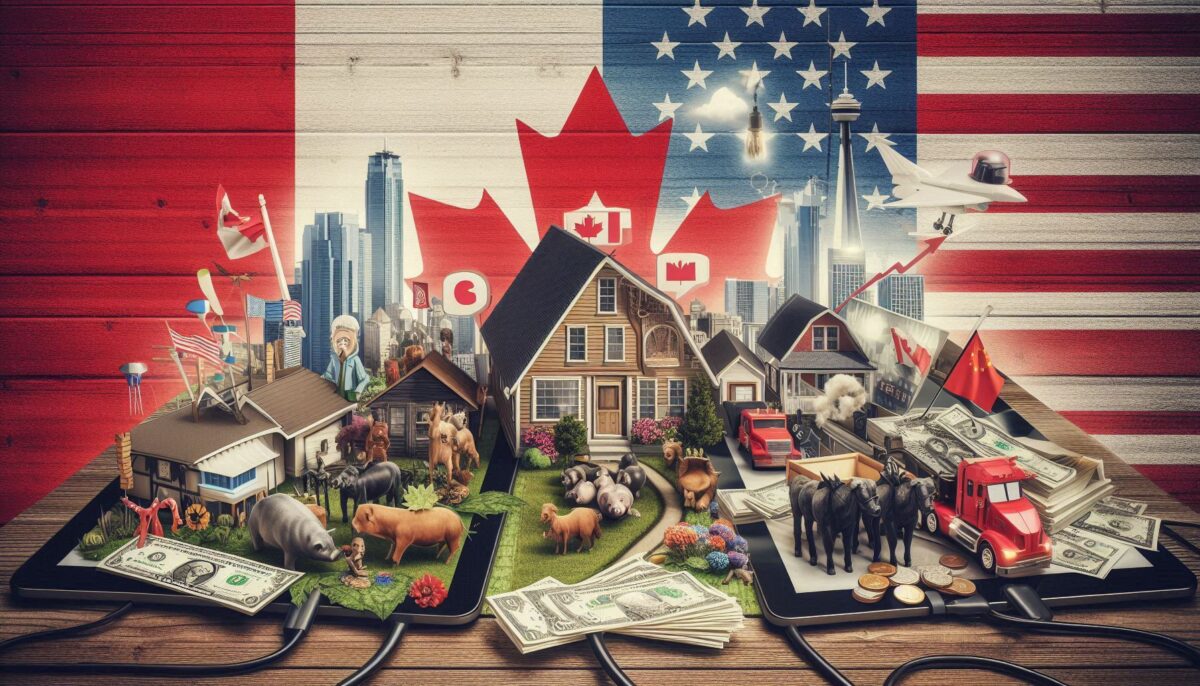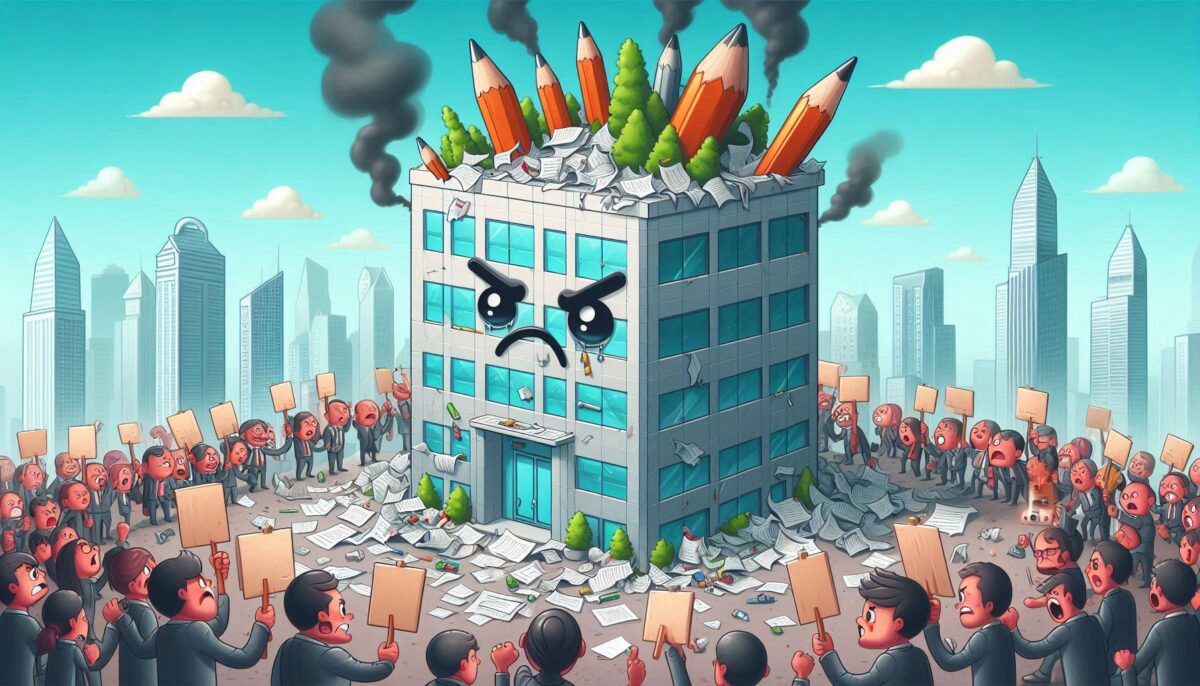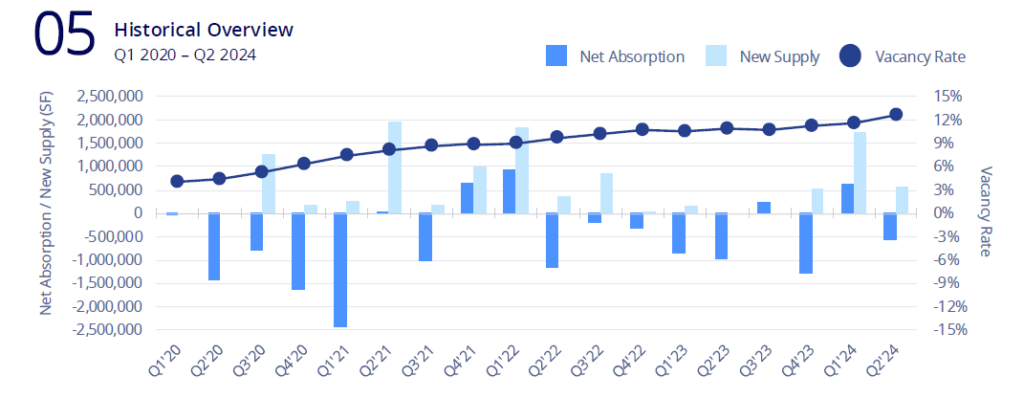Update Dec 14, 2024: Added Newsletter Email Archive at End of Post.
This thought experiment has been floating around in my big ol’ brain for a little while now, and I was curious what the results would be. So this post is going to be a bit of a back-test of investing in stocks (index fund) vs. real estate (homeownership as an investment). I’m going to have to make a few assumptions, but I’m going to try and make them as realistic as possible for the sake of this post. Before jumping into the thought experiment I want to point out and outline a principle that is sometimes lost in the numbers when people are comparing real estate to other investments like stocks.
Real estate is an insanely leveraged investment. Why? What does that mean? I didn’t know we’d be talking about Physics? Allow me to explain. Leverage in it’s most basic form is borrowing money from one person, to then turn around and invest. For example you might leverage 2x the money you have available to you. In stock terms this means that if your investment goes up 100% (doubles), you’ve made a 300% return (2x leverage + 2x return – 1x original investment). Let’s use real numbers to make this make more sense. Let’s say you have $100,000, you then go to the bank and say “hey, I have a great investment idea, my credit is great, will you lend me $100,000?” They say, “sure, no problem, but we’ll charge you interest.” So you take your now $200,000 and invest it (really it’s just $100,000 + $100,000 loaned against that). Your investment doubles. You now have $400,000 in a bank account. If you had only invested your $100,000, unleveraged, and your investment doubled, you’d have $200,000. Instead you used leverage and now you’ve made $200,000 instead of $100,000 by using 2 to 1 leverage (minus fees and interest). Let’s say for the sake of argument your fees and interest came out to $50,000 over the course of the investment, you pay back $150,000 to the bank. You still come out ahead with $150,000 profit + your original $100,000. More than double the initial amount, that’s the power of leverage.
HOWEVER, if your investment falls by 50%, you lose everything. How? Well you need to have a way to repay the bank, so the money you have is collateral for their loan. If your investment in stocks drops by 50% you’ll have $100,000 in your account, which is exactly enough to repay the bank. So you’ll get “margin called” which is when the bank sells stocks on your behalf and will pay back their loan. Just like that you go from $100,000 to nothing. So leverage has 2 sides, and the downside risk can be quite large and scary which is why most people should never play with leverage. Yes you can make astronomical returns, but you can go broke just as quickly. So… Real Estate, the thing we all live in, is leveraged 5 to 1… Let’s talk about it.
After what I’ve just told you about how leverage can destroy you’re investment, you’re probably thinking to yourself, “surely, no bank would be crazy enough to lend more than 2x or 3x to a VERY smart investor,” well do I have news for you. Every day, people are going out there, going to their banks and being provided a loan for 5x-20x the money they plan to spend on their home. How does that make any sense? Well, apparently, we’ve all decided that the most stable asset in existence is land, and homes. Every bank and government has decided collectively that homeownership is a right of sorts and it has resulting in lending policies that allow for this type of leverage. If you get into “low down payment” mortgages it gets even more crazy.
So lets take a look at an example. You have $100,000 that you want to spend on a home. About $10,000 of that will go to land transfer tax, lawyer fees, home inspections etc. So your investment after cost of doing business is closer to $90,000. Lets create 2 scenarios, both will factor in a renter investing in stocks vs. equivalent homeowner. I’ll try to provide actual examples of houses and rents too. A point that I think is important to make here is that past performance is never an indicator of future results, that goes for stocks and the housing market and there are a lot of things that influence both these markets in a big way, this is a historical example, and may not pan out exactly the same way in the future. But I hope it is illustrative.
Scenario 1: 20% Down Payment (5 to 1 leverage)
In 1999 $90,000 as a 20% down payment means that you can buy $450,000 worth of home. What does that get you?
In one of Mississauga’s nicer neighborhoods Lorne Park, that would get you a 4 bed, 3-4 bath, 2000-2500 sq. ft. home, 2 car garage, possibly with a pool.
A 5-year fixed mortgage rate would have been around 7.5% at the time.
Your monthly mortgage payment would be approximately $2600 per month, add in your other home expenses and let’s say $3000 per month.
Now, how much would a similar home cost to rent at the time?
I’m seeing around $2300-2500/month, so let’s call it $2500 after expenses again.
$500 less per month to rent.
Now that the stage is set, let’s do some math shall we.
Let’s assume the renter family’s put their initial $100,000 into an S&P 500 index fund and the $500 per month in savings goes into this same fund, so $6000 per year extra. Meanwhile, the other family’s savings gets dumped completely into home and mortgage we’ll also say that both families start in January of 1999 and the extra $6000 is added at the start of each year. We’ll just say that both families succumb to lifestyle inflation with the extra income over the years so their numbers don’t change. What happens?
Renter family:
| Year | S&P 500 ROI | Added dollars ($) | Portfolio Value ($) |
| 1999 | 19.53% | 6,000 | 126,701 |
| 2000 | -10.14% | 6,000 | 119,245 |
| 2001 | -13.04% | 6,000 | 108,913 |
| 2002 | -23.37% | 6,000 | 88,058 |
| 2003 | 26.38% | 6,000 | 118,871 |
| 2004 | 8.99% | 6,000 | 136,096 |
| 2005 | 3.00% | 6,000 | 146,359 |
| 2006 | 13.62% | 6,000 | 173,111 |
| 2007 | 3.53% | 6,000 | 185,433 |
| 2008 | -38.49% | 6,000 | 117,750 |
| 2009 | 23.45% | 6,000 | 152,770 |
| 2010 | 12.78% | 6,000 | 179,061 |
| 2011 | 0.00% | 6,000 | 185,061 |
| 2012 | 13.41% | 6,000 | 216,682 |
| 2013 | 29.60% | 6,000 | 288,596 |
| 2014 | 11.39% | 6,000 | 328,151 |
| 2015 | -0.37% | 6,000 | 332,915 |
| 2016 | 9.54% | 6,000 | 371,247 |
| 2017 | 19.42% | 6,000 | 450,509 |
| 2018 | -6.24% | 6,000 | 428,023 |
| 2019 | 28.88% | 6,000 | 559,368 |
| 2020 | 16.62% | 6,000 | 659,333 |
| 2021 | 26.89% | 6,000 | 844,241 |
| 2022 | -19.44% | 6,000 | 684,954 |
| 2023 | 24.23% | 6,000 | 858,372 |
Owner family by 2023: Home value $1,650,000-$1,750,000, mortgage paid off.
The average housing price growth in this time period was around 10% per year for detached homes. I tried to find actual houses on the market that have recently sold as a more true indicator of value rather than just computing the average. As you can see, due to the leverage that mortgages allowed you are now twice as wealthy as the person who invested in stocks, you own the home rent free, and you can accelerate your own savings on top of owning this now expensive home and outpace the stock investor even more. Meanwhile, the other family’s rent and expenses will have gone up and they may have had to move a few times because of owners selling homes. Stability is not quite the same, and while $800,000 is an impressive sum of money, it’s still half as much as the homeowner, even with historically higher growth in stocks than average.
What about the future of housing?
People are predicting that the next decade will not see the same returns on housing as the last two decades, but having a home even as an investment rather than leaving money in stocks can mean that while a tenant is paying down your mortgage for you, there will be money left over for you to continue investing in stocks, rinse and repeat, buy more homes get more tenants. Yes it is somewhat clinical, but the more people you have building your home equity, the more “streams” of income you will eventually have when all those homes are paid off, or you just sell them for a ton of money. Every home is a vehicle to 5x or more leverage, you’re controlling a $450,000 asset in our example with only $90,000. Yes you do have to pay interest and you’re “burning” a lot of money in interest every year, but even after all those fees, you’ve done well! I’m again stressing that past does not equal future. Who knows what the future holds! But historically, real estate has been the way to go, and every wealthy person I’ve ever met has some amount of holdings in real estate or land. Because they aren’t making any more of it!
Now there are a million ways to invest in real estate and make a return on investment much quicker than this believe it or not. One of those ways would be purchasing a home in need of some repair and then selling it, what people call “sweat equity” or “forced appreciation”, making it worth more to the market. This is more risk, but in theory more reward. But I’m more of a believer in the long game and just trying to acquire as many beans as possible so my pile of beans can be huge.
Let’s move onto scenario 2.
Scenario 2: 5% Down Payment (20 to 1 leverage)
Here’s a bit of a history lesson for you. The 5% down payment rule came into effect around 1995, and we proceeded to see two decades of the highest appreciation rates in the history of the GTA Real Estate Market. I’m not going to talk too much about government policies and what could have been different, maybe some other time, for now we’ll just accept this as it is. So in the grand year of 1999 before the dot com bubble, we can now leverage our money 20x! Woohoo! (probably).
The rules at the time were 5% up to 500,000 then 10% down up to $1 million. So if you buy a $999,999 house, your down payment is 7.5%, so not quite 20x leverage. Let’s say that you buy a $999,999 house in this scenario with 7.5% down, or $74,999 and you burn the other $25,000 on fees and mortgage insurance.
This budget, allows us to buy a home under $1,000,000 on the prestigious Mississauga Rd. north of the QEW. 4-5 Bed 8 Bath, over 5000 sq ft. Probably what we’d call a McMansion nowadays. In 2023 this caliber of home sold for $3.8 Million to $4.0 Million. Your monthly mortgage payments on this at 7.5% interest would be around $7,000 a month with property tax and everything else lets call it $9,000 a month. From what I can see online to rent a similar property would have been around $5000 a month call it $6000 after other expenses. Which is $3000 savings per month, or $36,000 per year. So lets take a look at this $100,000 stock investment, this time with $36,000 getting added per year.
| Year | S&P 500 ROI | Added dollars ($) | Portfolio Value ($) |
| 1999 | 19.53% | 36,000 | 162,560 |
| 2000 | -10.14% | 36,000 | 178,426 |
| 2001 | -13.04% | 36,000 | 186,465 |
| 2002 | -23.37% | 36,000 | 170,475 |
| 2003 | 26.38% | 36,000 | 260,943 |
| 2004 | 8.99% | 36,000 | 323,638 |
| 2005 | 3.00% | 36,000 | 370,427 |
| 2006 | 13.62% | 36,000 | 461,783 |
| 2007 | 3.53% | 36,000 | 515,355 |
| 2008 | -38.49% | 36,000 | 339,138 |
| 2009 | 23.45% | 36,000 | 463,108 |
| 2010 | 12.78% | 36,000 | 562,894 |
| 2011 | 0.00% | 36,000 | 598,894 |
| 2012 | 13.41% | 36,000 | 720,033 |
| 2013 | 29.60% | 36,000 | 979,819 |
| 2014 | 11.39% | 36,000 | 1,131,521 |
| 2015 | -0.37% | 36,000 | 1,163,202 |
| 2016 | 9.54% | 36,000 | 1,313,605 |
| 2017 | 19.42% | 36,000 | 1,611,699 |
| 2018 | -6.24% | 36,000 | 1,544,882 |
| 2019 | 28.88% | 36,000 | 2,037,441 |
| 2020 | 16.62% | 36,000 | 2,418,047 |
| 2021 | 26.89% | 36,000 | 3,113,941 |
| 2022 | -19.44% | 36,000 | 2,537,592 |
| 2023 | 24.23% | 36,000 | 3,197,174 |
Decided to use excel this time. In this second scenario, because you’re dumping so much money per year into stocks you end up within about $600,000 of the purchasing couple, but they STILL end up ahead. Another reminder that this time frame saw the most appreciation in stocks and real estate in known history. But again, even with the higher interest rate and extra mortgage insurance fees, the purchasing couple still ended up ahead of the renter couple, even with their prudent savings and investing plan. Many people also don’t know how to buy and hold when it comes to stocks and most retail investors underperform the market, as well as many professional investors, so this is an extremely optimistic ROI in the stock portfolio. Meanwhile getting someone to move their home is a much more arduous process and a more illiquid asset, but this is a benefit in a way because it means that you give the asset the proper amount of time it needs to appreciate in value.
So now we’ve seen both scenarios, and both point to the fact that purchasing a home has been the better way to build wealth in Canada in the past 2 decades. Will this be the same in the future? As mentioned many economist are predicting that the real estate market will not see the same returns as the past. But I still believe that due to the ability to leverage your money so highly, with the asset class being relatively stable (for now), makes it a great way to build wealth, and the ability to repeat the process with multiple properties provides growth that you simply won’t be able to duplicate in the stock market. You’re fundamentally limited by one income, but by being a landlord you are dumping many incomes into this investment idea.
Now there is an amount of stress to having that much leverage on your shoulders, if your home value drops 20% and you need to sell you won’t be able to get your down payment out. But just writing those words down unless you buy at the absolute peak and overextend yourself like crazy and lose your job at the same time, a 20% drop is an EXTREMELY uncommon occurrence in our real estate market, in stocks however, there were multiple 20% drops in that 25 year time frame, again psychologically, can be a hard time to sit there and watch your returns on paper take a nosedive. But no one really knows the day to day value of their house and even if the markets having a bad year most people aren’t going to jump to the conclusion that they need to sell.
There is one small dent in this math, and that’s condominiums. Condos have seen much more muted appreciation over the past 25 years compared to freehold housing types, the shift has been very pronounced in the post-covid years with a condo oversupply on the market and a lot of new condo inventory coming online at this moment in time. The price recovery in condos is going to be much slower than freehold but they did still appreciate at about 5-6% per year. So if we assumed a condo buyer vs. a condo renter, the numbers might be somewhat different. But if a condo is solely an investment property for you, it’s still likely that you’ll see good returns in the long run.
Newsletter #26: Thought Experiment of Real Estate Investing vs. Stocks, US Market News

This Weeks Blog Post:
Investing $100,000 in stocks vs. Real Estate 25 years ago:
- This post is a discussion about leverage and how real estate is a somewhat unmatched way to leverage your money.
- Two scenarios leveraging money to purchase real estate vs. stocks
- Remember, past performance doesn’t predict future results
Read the full article here: https://oliverfoote.ca/investing-100000-in-stocks-vs-real-estate-25-years-ago/
Market Talk:
- In case you missed it and wanted to hear my discussion with mortgage broker Deren Hasip I would highly recommend watching the video or listening to the podcast. We discuss the upcoming mortgage rule changes on Dec 15, 2024. How the US election may effect Canada. Some professional tips and tricks with mortgages. Examples of new rule changes on purchasing power for first time buyers.
- YouTube: https://youtu.be/8XyHEV1c7R4
- Spotify: https://open.spotify.com/episode/4vzu7YYs4SUBTTg1dILL22
- The Canadian Dollar has been suffering a bit thanks to comments that Trump has made about tariffs on Canada. If that does happen there is the possibility that the Bank of Canada will be hesitant to drop mortgage rates and we may see inflation return. These are worst case scenarios and we can hope that not everything will come to pass from the new administration, but one this is for sure that there will be changes, likely economically.
Stock Market Performance as of Tuesday Nov 26, 2024:
S&P 500: 6,013.13 (+26.79% YTD)
NASDAQ: 19,136.73 (+29.60% YTD)
S&P/TSX Composite: 25,383.73 (+21.62% YTD)
Macroeconomics Statistics:
Canada’s CPI Inflation Sep 2024: 2.0% (0.4% Increase from Sept 2024)
Current BoC Benchmark Interest Rate: 3.75% (0.5% Decrease on Oct 23, 2024)
Unemployment Rate October 2024: 6.5% (0.1% Decrease from Sept 2024)
Greater Toronto Area (GTA) Real Estate Stats – October 2024:
YTD Average Selling Price: $1,121,871
YTD % Change in Average Selling Price: -1.0%
Y-o-Y (comparing Octobers) % Change in Average Selling Price: +1.1%
YTD Number of MLS Sales: 58,435
YTD % Change in MLS Sales: +0.1%
Y-o-Y (comparing Octobers) % Change in MLS Sales: +44.4%
Number of MLS Sales in October: 6,658
Y-o-Y (comparing Octobers) % Change in Active Listings: +25.3%
Number of Active Listings in October: 24,481
Inventory Available: 3.5 Months (Decrease from 5.0 Months in Sept 2024)
Subscribe to our newsletter!



